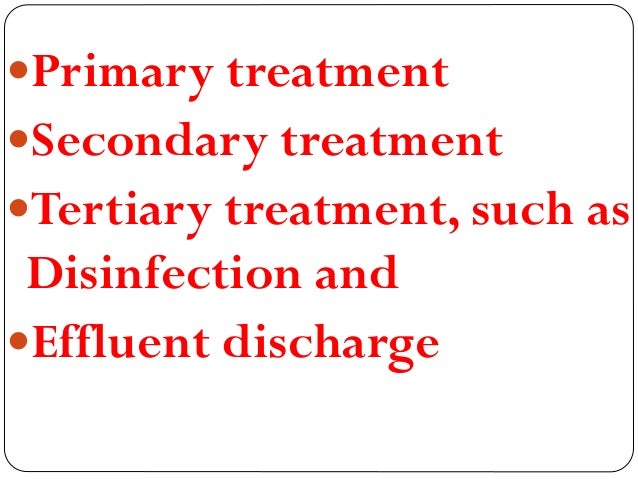Tertiary Water Treatment Definition
The process includes four or five stages.
Tertiary water treatment definition. More than one tertiary treatment process may be used at any treatment plant. Tertiary treatment is the last step of the entire sewage water treatment process after this the waste water becomes comparatively safer and can be discharged into the environment. It is generally applied in industrialized countries by micro filtration or synthetic membranes. These are preliminary primary secondary and tertiary wastewater treatment.
Removing these harmful substances makes the treated water safe to reuse recycle or release into the environment. Left during the filtering step wastewater from secondary treatment still containing suspended solids pours from a trough and percolates through a filter bed made of porous media such as sand gravel and anthracite. If disinfection is practised it is always the final process. Tertiary treatment is part of the treatment process which wastewater must go through before it can be discharged into the environment.
When wastewater arrives at the treatment plant it contains many solids that cannot be removed by the wastewater treatment process. Substances like activates carbon and sand are among the most commonly used materials that assist in this process. Disinfection for control of pathogenic microorganisms and viruses is the most common type of tertiary treatment. This third stage of treatment removes inorganic compounds bacteria viruses and parasites.
Nitrates can be removed from wastewater by natural processes in wetlands but also via microbial denitrification. The filtered water is then piped away for disposal. After this treatment the water is disinfected and can be pumped direct into reservoirs. Tertiary water treatment is the final stage of the multi stage wastewater cleaning process.
C tertiary treatment in which chemical and physical methods are generally used to remove all the biochemical oxygen demand bod nitrogen and phosphorus. Tertiary treatment is also a polishing technique used after a traditional sewage treatment sequence. The purpose of tertiary treatment is to provide a final treatment stage to further improve the effluent quality before it is discharged to the receiving environment sea river lake wet lands ground etc. This can include rags paper wood food particles egg shells plastic and even toys and money.



.jpg)




































